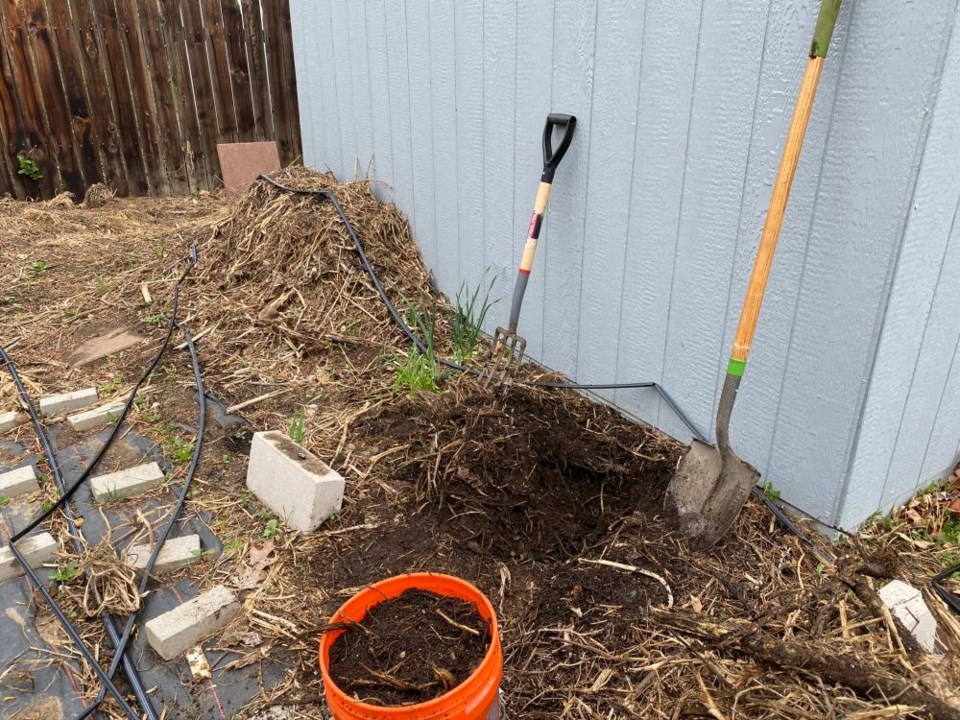Composting is the big secret to having a healthy garden, there are absolutely no ifs, ands or buts about it. If you want a healthy garden, you need to be composting.
Composting is the simple act of taking food scraps, letting them break down to be turned back into highly nutritious soil, which you then add to your existing ground. This allows you to give back to the soil so you are not always taking from it. It’s basically like a bank account, if you do nothing but withdraw from your bank account and you're not contributing to it at all, well, one day this bank account will be empty. If you are growing anything in your soil, you need to be giving back to it so the ground will continue to give to you. Otherwise, you'll be left with a barren wasteland that has given all it has and you won’t be able to grow anything. Luckily, composting via a traditional compost pile really isn’t hard to do, and the best way to compost is to dig some holes straight into the ground.
 Two in-ground compost piles. One done and ready to be added to the urban farm while the other continues to break down. By James Lissy
Two in-ground compost piles. One done and ready to be added to the urban farm while the other continues to break down. By James LissyHow to make a traditional compost pile:
Step 1: Dig two holes in the ground (after making sure your utilities are marked and you're not going to hit any lines).
Step 2: Put an empty bucket in your kitchen for food scraps. This does not need to be a fancy bucket, but it should be airtight with a lid. It also does not need to be overly large; you're going to be emptying it fairly regularly.
Step 3: Collect food scraps and add to said bucket. Vegetables only, no meat or fish.
Step 4: Empty this bucket several times a week into the first hole you dug. Emptying daily is ideal.
Step 5: Each time you empty the bucket, you add a layer of dried brown plant material on top of it, this can be leaves, twigs, hay, straw, whatever you can conjure that is organic, brown material. You are making a compost lasagna. You're adding a thin layer of green material (food scraps) followed by a thin layer of brown material (basically dried organic matter) until your compost pile is full. Your goal is half green material (food scraps) and half brown material.
Step 7: Once your first hole in the ground is full (fill up one hole first before moving onto the next), be sure you end with a layer of brown material then start filling the second hole.
Step 8: Start turning the now full compost pile. Take a pitchfork or shovel or whatever you have and mix the contents of the now full compost pile every few days. A traditional compost pile needs oxygen to break down everything so the more turning the merrier and the faster it will break down.
Step 9: Don't add new material to your now-full compost pile, add new food scraps and organic matter to the second hole you dug. That's why you dug two holes after all. Keep turning the full compost pile every few days as it breaks down into black gold while you start building your second pile.
Step 10: Once your full compost pile looks like dirt again, add it back to your garden and, boom, you have successfully made compost and are now adding back to the soil so you can keep growing on it until the end of time. In a perfect world, by the time your first compost pile has completely broken down, your second compost pile is full and you can seamlessly alternate between the two. The world we live in is currently far from perfect, so don't expect that to happen, but you can strive for it.
This whole process is going to take three to six months for everything to break down, if this sounds too slow then check out my blog post about The Great Composting Experiment of 2020 for the compost process I currently use.
Have a question?
If you have any questions or subjects that you would like me to cover in this column, they can be emailed to [email protected] with the subject of “Longmont Leader Question.” I will happily answer any questions that you may have, after all this column is for you to benefit from and enjoy.


